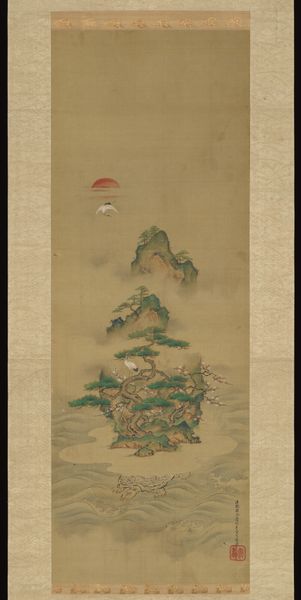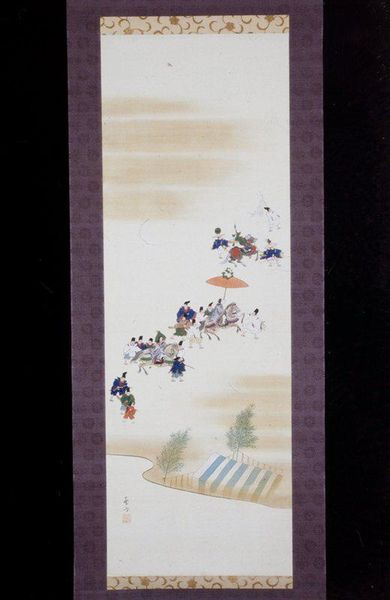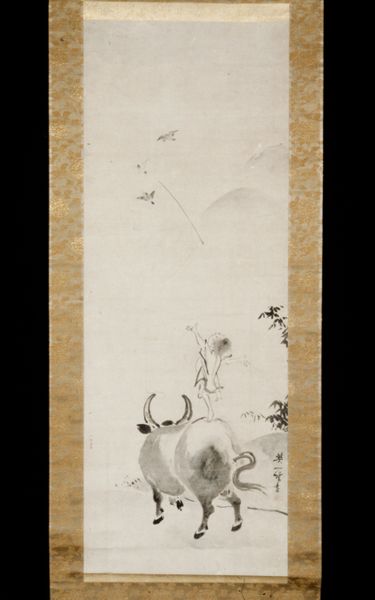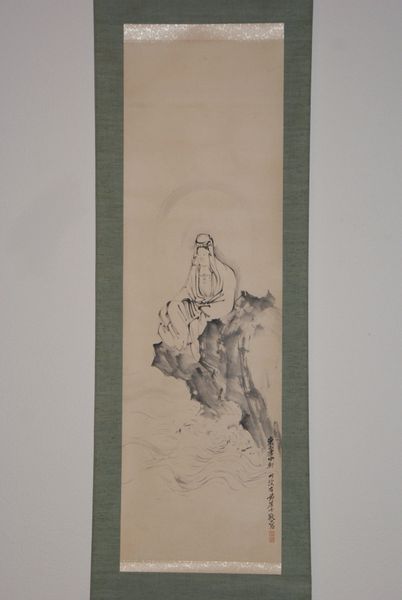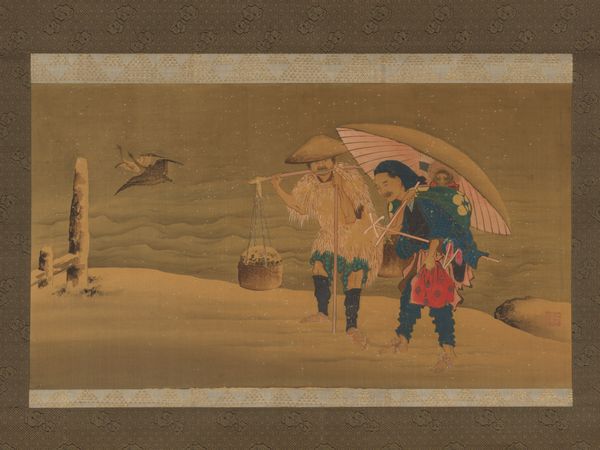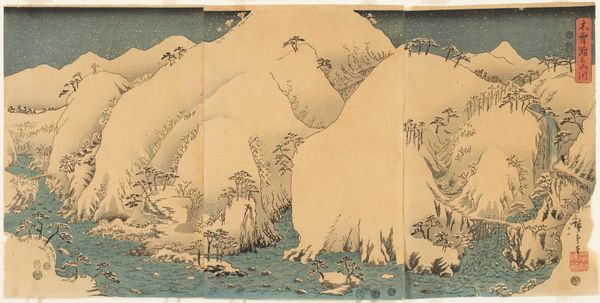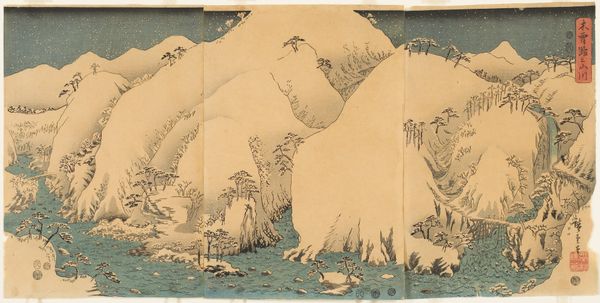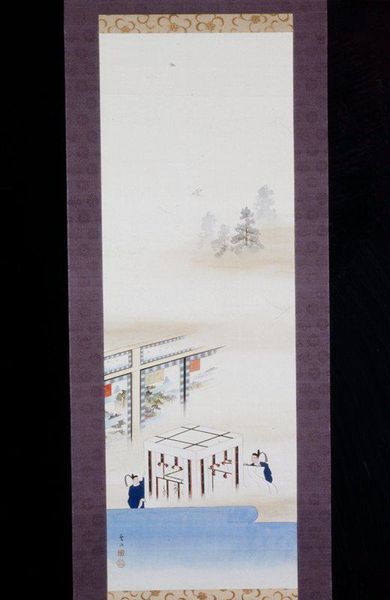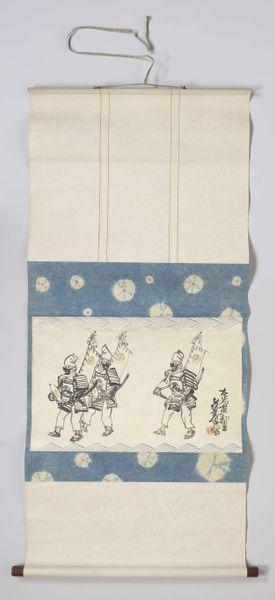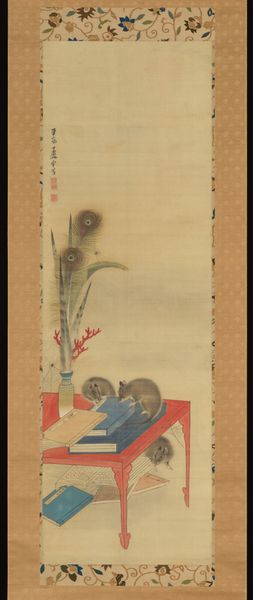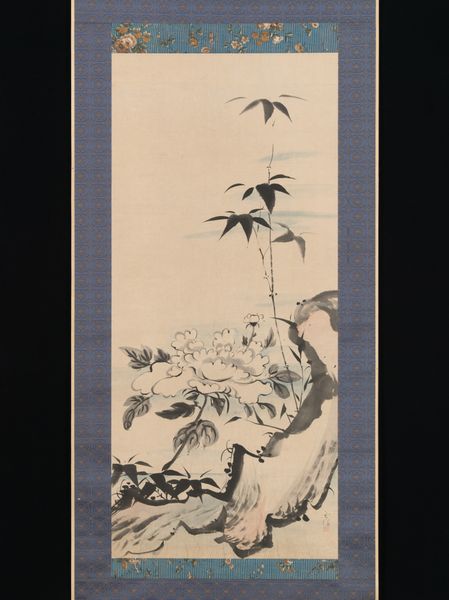
painting, watercolor, ink
#
water colours
#
narrative-art
#
painting
#
asian-art
#
landscape
#
ukiyo-e
#
japan
#
figuration
#
watercolor
#
ink
Dimensions: 41 9/16 × 12 1/2 in. (105.57 × 31.75 cm) (image)79 5/16 × 18 3/16 in. (201.45 × 46.2 cm) (mount, without roller)
Copyright: Public Domain
Editor: Here we have "Turtle Blowing Out Butterflies," a watercolor and ink painting likely from the 19th century by Tani Buncho, currently residing at the Minneapolis Institute of Art. I'm struck by the dreamlike quality of this piece, especially the contrast between the solid, grounded turtle and the ephemeral butterflies. What do you see in this work? Curator: I see a potent symbol of transformation and liberation rooted in socio-political commentary. Buncho, living during a time of intense social hierarchy, might be using the turtle, a symbol of longevity and steadfastness, to represent the established order. The butterflies, emerging from the turtle's breath, could symbolize burgeoning desires for social and personal freedoms escaping those structures. What about the prominent sun at the top, how might that fit into such a narrative? Editor: Perhaps the sun represents enlightenment or a hopeful future towards which these newfound freedoms are striving? Is it possible this could be referencing specific political events of that era? Curator: Precisely. Ukiyo-e, while often celebrated for its beauty, frequently encoded critiques of the ruling elite within seemingly innocuous imagery. The tension between the static, hierarchical turtle and the liberated, dynamic butterflies mirrors the social unrest simmering beneath the surface of Edo-period Japan. We should also think about who had access to art, and how these subversive messages circulated. Who do you think this message was for? Editor: That's fascinating to consider! Thinking about it, perhaps the artwork acted as a quiet form of resistance for the educated merchant classes? Thank you for enlightening me to look beyond the immediate charm and delve into its complex layers of social and political commentary. Curator: Indeed. By looking at art as more than just aesthetic beauty, we can unearth potent social statements about gender, identity, race, and class of the period and now.
Comments
No comments
Be the first to comment and join the conversation on the ultimate creative platform.
